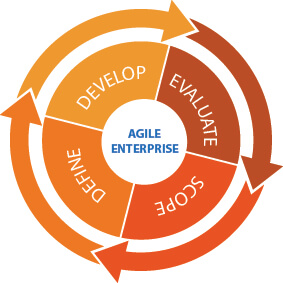Going Agile
Agile Transformation has taken over software companies around the world by storm. It is no longer just a software development methodology, but more so an idealogy, which has become the cornerstone for cutting-edge businesses. Agile is adopted not just as a means to increase efficiency, but also effectiveness, which means that software development companies, can deliver better value, and get it to the market faster. The benefits of Agile transformation are well known – happy employees and customers, shortened cycle times, decreased costs, increased revenue, flexibility, higher quality, shorter learning cycles and so forth. Given the extensive list of benefits, it is no surprise that ISVs are so quick to adopting agile. But how does one measure the benefits of going agile?
What is the goal?
When discussing the ROI aspect of Agile transformation, it would be a wise idea to focus on measuring results rather than expectations, since expectations tend to focus more on following operational protocols rather than value delivery. First, it is important to have an organization wide understanding of exactly what goals are expected from the agile transformation. Once you understand that, you should have a better idea how to measure whether the agile transformation has been successful or not. The ROI of going agile depends what you’re trying to achieve.
 Higher efficiency: If your emphasis or the key reason for choosing to go Agile is to be more efficient, you will likely see the results you expected. If your goal is to get the product to market sooner, you can consider comparing time to release. However, even though you may get the product to the market faster, this doesn’t necessarly mean that you will be able to increase revenue or product value. No matter how much you are reducing time or cost, the revenue metric is what ultimately determines whether or not you have a successful business.
Higher efficiency: If your emphasis or the key reason for choosing to go Agile is to be more efficient, you will likely see the results you expected. If your goal is to get the product to market sooner, you can consider comparing time to release. However, even though you may get the product to the market faster, this doesn’t necessarly mean that you will be able to increase revenue or product value. No matter how much you are reducing time or cost, the revenue metric is what ultimately determines whether or not you have a successful business.
Higher quality: When your goal is to improve the quality of your product, you can consider numbers that measure how many bugs were generated and reported compared to before the agile transformation.
The ROI of Agile Transformation can only be measured once the teams have been trained and gained the experience needed to be executing well. Expect to measure the metrics at the start, mid-point and end of the transformation to have truly accurate ROI.
Metrics you should consider using:
1. Cycle Time: Cycle Time is the time taken to turn a request or requirement into delivered business value (production).This is a very objective measure that can not be altered, is easy to measure and it has direct meaning to all stakeholders.
2. Shortened development cycles: This metric takes into account the shortening of the concept-to-cash timeline. You can measure this by the time it takes from idea to solution and to which extent is this time has shortened since the transition to Agile.
3. Increased Agile Maturity: You can measure this progress by the amount of sprints that deliver working and tested software, the extent in which business value is driving the product backlog ordening, and the extent to which teams are self-organizing and continuously improving.
4. Increased business value: This metric is the amount of business value teams deliver from their sprints. You can measure this benefit by measuring the value output from each sprint and the extent in which this is increasing from the Agile transformation. Consider doing this with value points delivered (and the points to be defined by the Product Owner).
5. Increased delivery reliability: How does the estimated/promised output compare to the actual output. Teams simply become more reliable in their predictions. As such the promises made to customers regarding future deliveries are better kept. Consider measuring this benefit by measuring the percentage of stories (or story points) that teams have forecasted in their sprints that have actually been delivered.
Error: Contact form not found.




